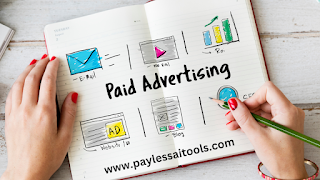When to Use Ads vs. Sponsorships for Monetization
While both approaches offer pathways to profitability, choosing the right one depends on your audience, niche, engagement level, and content goals. In this article, we'll take a deep dive into the differences between newsletter ads and sponsorships, highlight the pros and cons of each, and help you determine the best strategy for your monetization journey.
The Rise of Newsletter Monetization
Email newsletters are no longer just internal communication tools or promotional blasts. They've become rich editorial products, with some creators generating five or six-figure incomes.
Key statistics to consider:
• Over 4.6 billion people use email worldwide.
• Email newsletters boast higher engagement rates than most social media platforms.
• Platforms like Substack, Beehiiv, ConvertKit, and Revue have made it easier to launch and monetize newsletters.
As creators capitalize on this trend, two main models dominate: ads and sponsorships.
What Are Newsletter Ads?
Newsletter ads are display or text-based advertisements that are embedded within your email content. These ads are typically purchased on a CPM (cost per thousand impressions), CPC (cost per click), or flat-rate basis by advertisers who want access to your email audience.
Common types of newsletter ads:
• Banner ads (top, middle, or footer)
• Sidebar ads (if applicable)
• Text or native ads
• Product listings or promotions
These ads can be sold directly or via ad networks and programmatic platforms such as Paved, Swapstack, or LiveIntent.
What Are Newsletter Sponsorships?
Sponsorships are broader, more integrated promotional partnerships where a brand sponsors an entire issue or section of your newsletter. Rather than being a separate display ad, the sponsor’s message is woven more naturally into your content.
Types of newsletter sponsorships:
• Sponsored intros or segments
• Branded content sections
• Exclusive sponsored editions
• CTA-driven copy with tracking links
Sponsorships often include a brand mention in your subject line, header, or footer and are customized to align with your voice and audience tone.
Comparing Ads vs. Sponsorships: Key Differences
| Feature | Ads | Sponsorships |
|---|---|---|
| Format | Display, banners, text | Native, integrated content |
| Placement | Within or around content | Throughout or in intro/body/footer |
| Revenue Model | CPM, CPC, or flat rate | Flat rate or performance-based |
| Integration Level | Low to moderate | High (custom content or messaging) |
| Creative Control | Advertiser-controlled | Joint or creator-led |
| Relationship Type | Transactional | Collaborative |
Pros and Cons of Ads in Email Newsletters
Pros:
• Scalable: You can add multiple ads without major content changes.
• Easy to manage: Use ad networks for automated ad placement.
• Low commitment: Short-term engagements with less brand alignment needed.
• Diverse revenue streams: Sell space to multiple advertisers.
Cons:
• Lower engagement: Readers may ignore banner-style ads (ad fatigue).
• Aesthetic disruption: Ads may interrupt your newsletter flow.
• Less personal: Harder to align with your tone or voice.
Pros and Cons of Newsletter Sponsorships
Pros:
• Higher CPMs: You can charge more due to deeper brand integration.
• Better engagement: Readers are more likely to trust your endorsement.
• Stronger brand relationships: Build long-term partnerships with sponsors.
• Creative control: Craft messages that resonate with your readers.
Cons:
• Time-consuming: Custom content requires planning and communication.
• Limited slots: You can’t overload your newsletter with sponsors.
• Risk of misalignment: Promoting a poor-fit brand can harm your reputation.
When Should You Use Ads?
You should consider using ads in your newsletter if:
• You’re looking for quick monetization with low overhead.
• You have a large audience (10,000+ subscribers) with decent open rates.
• You prefer automated revenue through ad networks.
• Your newsletter is more informational than personal.
Best for:
• News aggregation newsletters
• Finance, tech, or news-focused creators
• Publishers with high-volume mailing lists
When Should You Use Sponsorships?
Opt for sponsorships when:
• You have a highly engaged, niche audience.
• You want brand alignment and storytelling opportunities.
• You’re building trusted personal connections with readers.
• You prefer fewer, high-value deals over many small ones.
Best for:
• Thought leaders, personal brands, and niche creators
• B2B newsletters or industry experts
• Writers with strong editorial voices
Hybrid Monetization Strategy: Ads + Sponsorships
Many successful newsletters combine both models. For instance, a weekly edition may include:
• A main sponsor that gets prominent placement.
• A banner ad or product promotion midway through the newsletter.
• An affiliate link or ad in the footer.
This hybrid approach maximizes your earnings while maintaining flexibility and engagement.
Newsletter Monetization Best Practices
• Know Your Audience: Understand demographics, pain points, and buying behavior.
• Track Key Metrics: Open rate, CTR, subscriber growth, and engagement inform pricing.
• Create a Media Kit: Showcase stats, subscriber numbers, audience insights, and previous sponsor examples.
• Stay Transparent: Let readers know when content is sponsored.
• Test and Iterate: Try A/B testing placements, messaging, and formats.
• Protect Your Brand: Only promote what you believe in to preserve trust.
Tags






